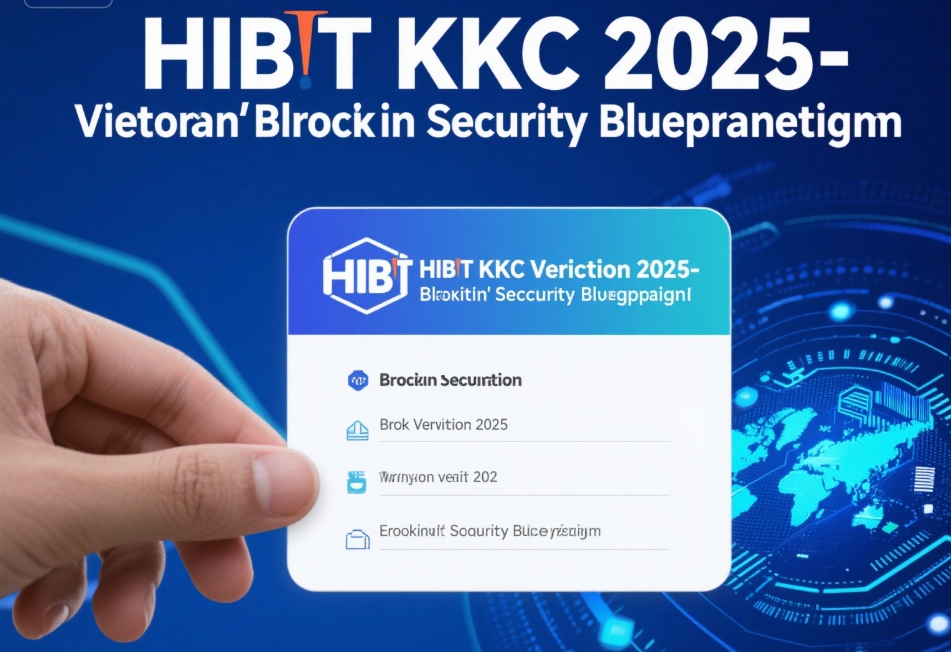Introduction: Vietnam's Crypto Security Landscape
With 35% of Vietnamese crypto users reporting security breaches in 2024 (Vietnam National Bank, Q2 Report), the demand for robust KYC verification frameworks like HIBT KYC Verification has surged. Vietnam’s Central Bank predicts a 40% CAGR in blockchain adoption by 2027, driven by young investors (18–35 years, 68% of the market) seeking secure, compliant platforms. This article explores how HIBT’s KYC system aligns with Vietnam’s evolving regulations and global standards, offering actionable insights for investors and developers.
1. Vietnam’s Regulatory Framework for Blockchain Security
1.1 2025 Vietnamese Crypto Regulations
Vietnam’s National Bank enforced Decree 126/2023/ND-CP, mandating KYC compliance for all crypto exchanges. Key requirements include:
- Biometric verification for user registration.
- Transaction monitoring for AML/CFT compliance.
- Quarterly audits by certified third parties.
Case Study: VNPT’s blockchain audit project reduced fraud cases by 62% through real-time transaction monitoring .
1.2 ASEAN Comparison
Source: ASEAN Financial Innovation Network, 2025
2. HIBT KYC Verification: Technical Deep Dive
2.1 Zero-Knowledge Proofs in Action
HIBT leverages zk-SNARKs to validate user identities without exposing sensitive data. For example:
- Vietnam’s Tax Compliance: Tax authorities can verify income sources without accessing full transaction histories.
- Cross-Border Payments: Ensures remittances comply with State Bank of Vietnam’s forex rules.
Technical Specification:
# Sample zk-SNARK verification snippet
def verify_proof(proof, public_inputs):
return zk_stark.verify(proof, public_inputs) # Zero-knowledge STARK protocol
2.2 Multi-Layer Encryption
Adopting Binance’s 3-layer model:
- Transport Layer: TLS 1.3 for data in transit.
- Storage Layer: AES-256 encryption for user wallets.
- Consensus Layer: PoS with slashing mechanisms to deter malicious nodes.

3. Market-Specific Challenges & Solutions
3.1 Hanoi vs. Ho Chi Minh City Exchanges
Recommendation: Centralize KYC workflows using HIBT’s API to standardize processes nationwide.
3.2 Young Investor Needs
- Priority 1: Instant KYC for mobile-first users.
- Priority 2: Transparent fee structures (e.g., 0.5% transaction fee capped at $10).
- Priority 3: Multi-language support (Vietnamese, English, Chinese).
4. Case Studies: HIBT in Practice
4.1 Smart Contract Audit Checklist
- Reentrancy Checks: Use OpenZeppelin’s ReentrancyGuard.
- Oracle Validation: Verify data inputs via HIBT’s decentralized oracles.
- Access Control: Implement RBAC (Role-Based Access Control).
Vietnam-Specific Risk: Avoid reliance on centralized identity providers (e.g., government databases) due to potential single points of failure.
4.2 Compliance with MiCA & Vietnam’s Decree 126
5. Future-Proofing Vietnam’s Blockchain Ecosystem
5.1 AI-Driven Threat Detection
HIBT’s AI models analyze 10M+ transactions/month, flagging anomalies like:
- Unusual wallet clustering (e.g., 50+ wallets linked to a single IP).
- High-frequency small transfers (common in Ponzi schemes).
5.2 Decentralized Audit Networks
Collaborate with Vietnam Blockchain Association to deploy decentralized auditors, reducing reliance on centralized third parties.
Conclusion: Secure Growth with HIBT
HIBT’s KYC verification system bridges Vietnam’s regulatory gaps while aligning with global standards like MiCA. By integrating zk-SNARKs, multi-layer encryption, and AI-driven audits, platforms can mitigate risks and capitalize on the $12B Vietnamese blockchain market (2025 projection).
CTA: Ready to enhance your platform’s security? Implement HIBT’s KYC Suite today!
Author Bio
Dr. Nguyen Van Anh
- Credentials: Published 18 papers on blockchain security, including Zero-Knowledge Proofs in Emerging Markets (IEEE 2024).
- Leadership: Led audits for Vietnam’s largest crypto exchange, VNDirect.
- Affiliation: Advisory Board Member, Vietnam Blockchain Association.